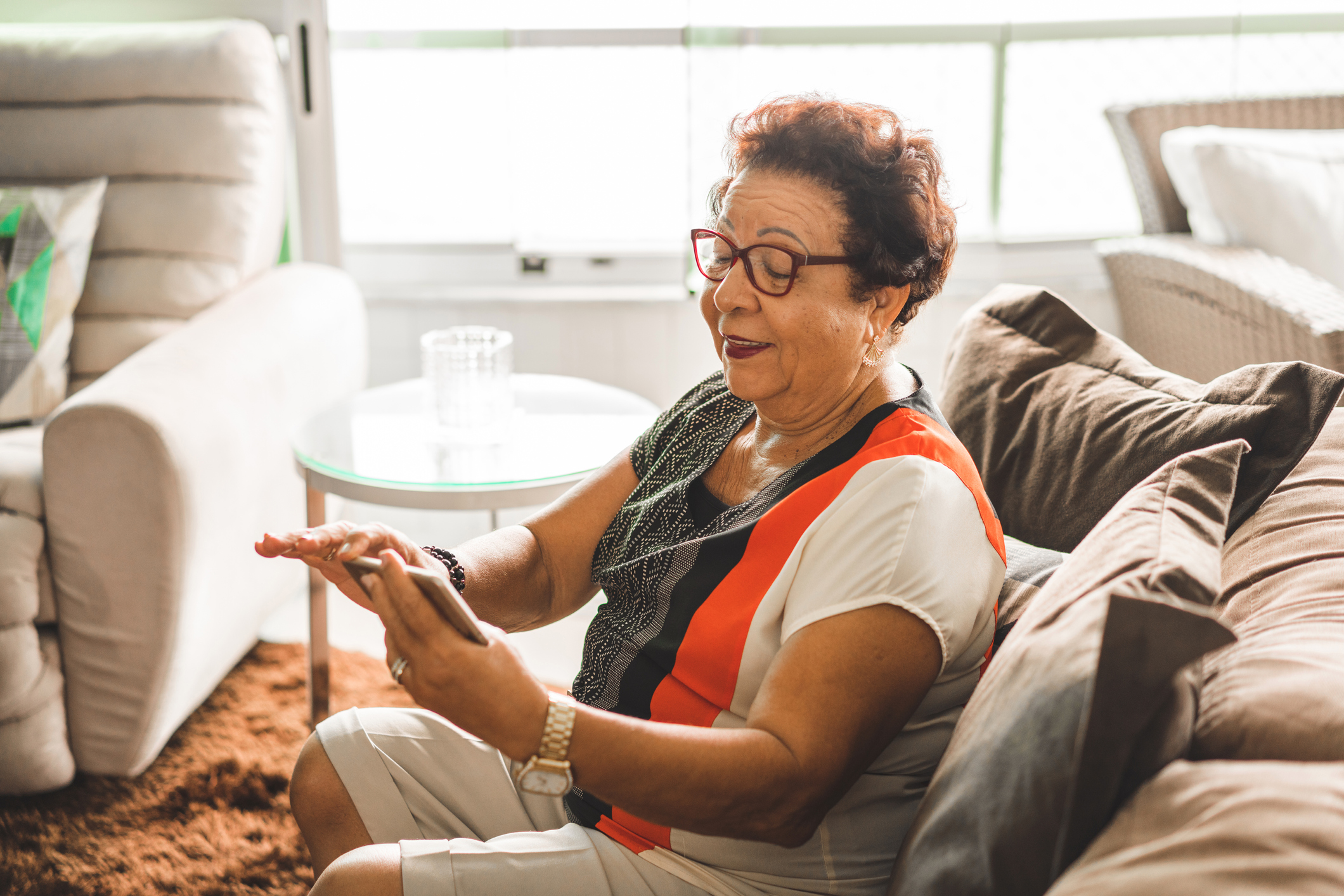How to combat loneliness in older adults during COVID-19

June 08, 2020
Since the COVID-19 pandemic began to sweep across the United States in early March, experts have warned that older adults are particularly vulnerable. Due to weaker immune systems and their likelihood of having chronic conditions such as heart disease, diabetes, lung disease, and cancer, they are at a significantly higher risk for COVID-19 complications or death, with people over 80 184 times more likely to die from the disease than those in their 20s. Nursing homes have been particularly hard-hit, with a third of all U.S. COVID-19 deaths taking place there.
Older adults are also vulnerable to a second public health crisis: social isolation.
To protect older adults, health officials have been imploring them to avoid exposure to others — who might unknowingly infect them — by either staying at home or banning visitors from nursing homes. While these measures are necessary for preventing the spread of the virus, the resulting seclusion can take a toll.
“The outbreak of COVID-19 will have a long-term and profound impact on older adults’ health and well-being,” writes Bei Wu, Dean's Professor in Global Health at NYU Rory Meyers College of Nursing, in a new article in the journal Global Health Research and Policy. “Social isolation and loneliness are likely to become major risk factors that affect older adults’ health outcomes.”
Studies have found that social isolation is a risk factor for a range of physical and mental health conditions, including heart disease, obesity, diminished immune response, depression, and anxiety. One of Wu’s studies even shows that social isolation is linked to poor cognitive functioning in older adults.
Isolation and loneliness among older adults was a serious public health problem long before the pandemic: in the U.S., a quarter of older adults living at home are considered to be socially isolated, and 43 percent of them report feeling lonely. Those older adults who are less isolated usually participate in social activities at senior centers, churches, and with family and friends, while nursing home residents benefit from family visits to connect them with the outside world.
The pandemic abruptly halted these face-to-face interactions, leaving a void not easily replaced by the occasional phone call. In her Global Health Research and Policy article, Wu, who is also the co-director of the NYU Aging Incubator, offers several strategies for helping older adults feel more connected in the time of COVID-19.
Encourage physical distance and social connection.
Public health messaging on “social distancing” may have missed the mark. While staying physically distant is important, maintaining social connection is more important than ever, Wu explains. Older adults can engage in social connection with their families, community organizations, nursing home staff, and importantly, their peers — just with some modifications to keep a safe distance.
Use technology to combat isolation.
A key way to maintain social connection at a safe distance is to use technology, which has transformed how we interact with one another, especially during the pandemic. While older adults may not seem as tech-savvy as younger generations, this assumption may be unfounded: Wu and her colleagues’ latest research shows that 92 percent of older, low-income Chinese Americans have a smart device, and 72 percent use WeChat, the most popular Chinese social media platform.
“It is time to develop more person centered applications with the input from older adults and their family members,” Wu writes. Embracing technologies like instant messaging, video, and social media can foster essential connections for older adults.
Identify loneliness in health care settings.
Older adults tend to go to the doctor more often than their younger counterparts, making health care visits opportunities for identifying those at high risk for isolation and loneliness. Wu writes that we need methods for doctors, nurses, and other clinicians to determine whether their patients are isolated, and whether their loneliness is acute or chronic, which can help inform public health interventions. In addition, telehealth can play a role in safely increasing access to health care providers and screening for social isolation during the pandemic.
Photo credit: Getty Images